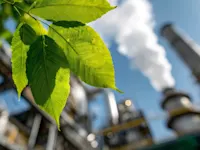
Illinois to Ban Nonbiodegradable Plastic Glitter in Personal Care Products by 2029
Illinois will prohibit nonbiodegradable plastic glitter in personal care products by 2029, impacting manufacturers, retailers, and regulators alike.


On 18 December 2024, the Government of Canada published amendments to the Formaldehyde Emissions from Composite Wood Products Regulations in the Canada Gazette, Part II. These updates, which take effect in 90 days, aim to refine testing requirements, alleviate industry burdens, and align Canadian standards with the U.S. Environmental Protection Agency’s TSCA Title VI, ensuring better public health protection and trade harmonisation.
The amended regulations address a drafting oversight in the 2021 rules, clarifying that only primary testing for formaldehyde emissions must be conducted by accredited laboratories. Routine quality control tests can now be performed without this requirement, reducing compliance costs for manufacturers.
Additionally, new provisions simplify record-keeping for retailers, importers, and manufacturers. While importers and manufacturers must maintain proof of compliance for composite wood products, retailers are no longer required to retain declarations of certification. This shift aims to reduce administrative burdens along the supply chain while maintaining stringent safety standards.
Formaldehyde, a common indoor air pollutant, can cause irritation and exacerbate asthma symptoms, particularly in children. High exposure levels are linked to more severe health risks, such as cancer of the nasal passageways. The 2024 amendments retain strict emission limits for composite wood products, ensuring they continue to meet safety requirements for indoor environments.
Recognising the interconnected nature of North American trade, the updated regulations align closely with changes made by the U.S. EPA to TSCA Title VI in February 2023. These adjustments include updated performance standards for ultra-low-emitting formaldehyde resins and improved labelling requirements, fostering seamless cross-border trade.
By amending these regulations, Canada strengthens its commitment to safeguarding public health while supporting the composite wood industry. The updates not only clarify compliance but also ensure Canadian manufacturers remain competitive in the global market.
Foresight continuously tracks 1000s of sources and maps updates to your portfolio:




Illinois will prohibit nonbiodegradable plastic glitter in personal care products by 2029, impacting manufacturers, retailers, and regulators alike.

The EU has launched a public consultation to evaluate the Biocidal Products Regulation, seeking input on safety, innovation and market efficiency.

The EU’s new environmental simplification package aims to cut red tape across reporting rules for waste, batteries, industrial emissions and permitting—delivering €775 million in annual savings.
Subscribe to Foresight Weekly and get the latest insights on regulatory changes affecting chemical compliance.
Free forever. Unsubscribe anytime.
Read by professionals at